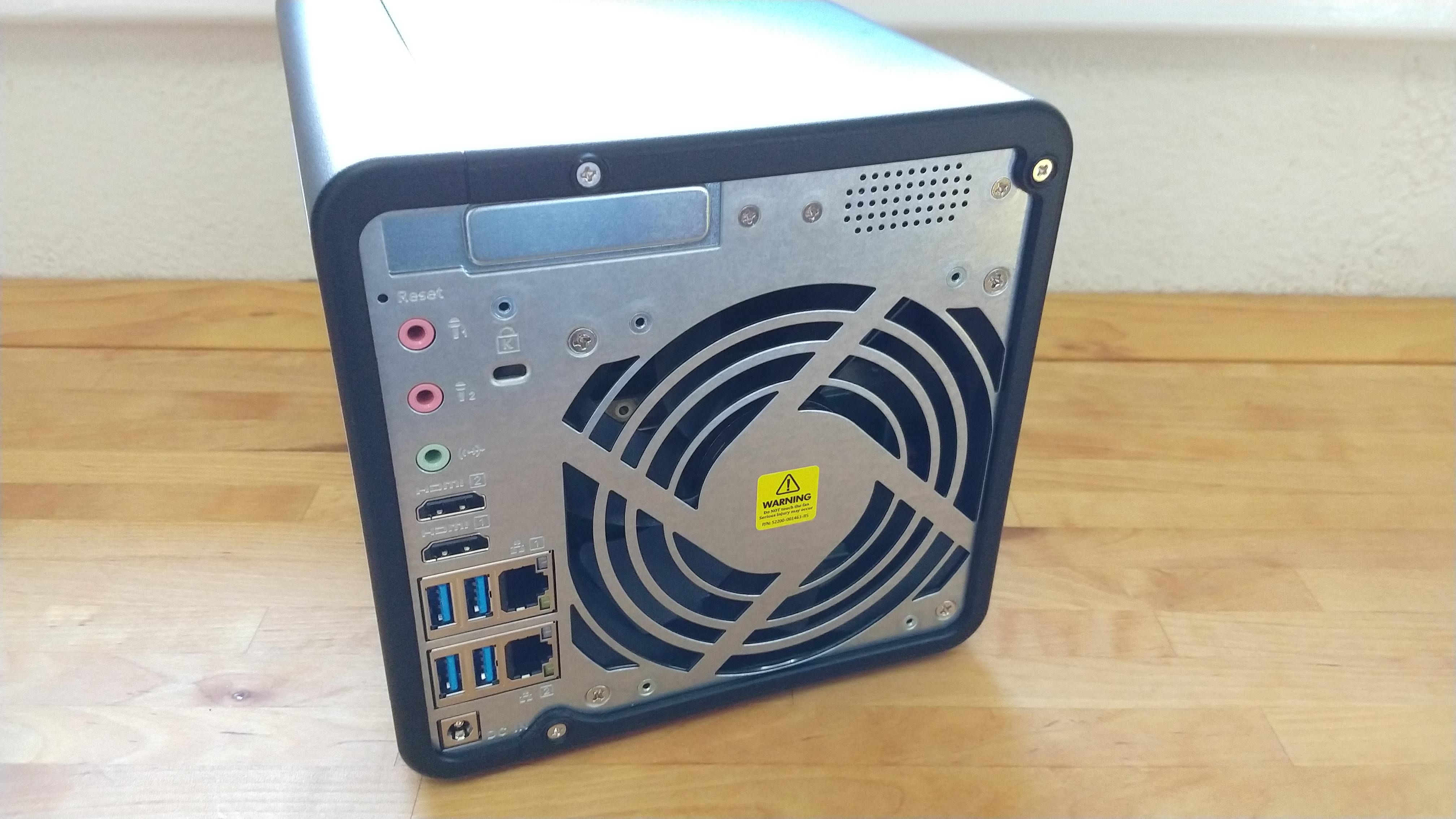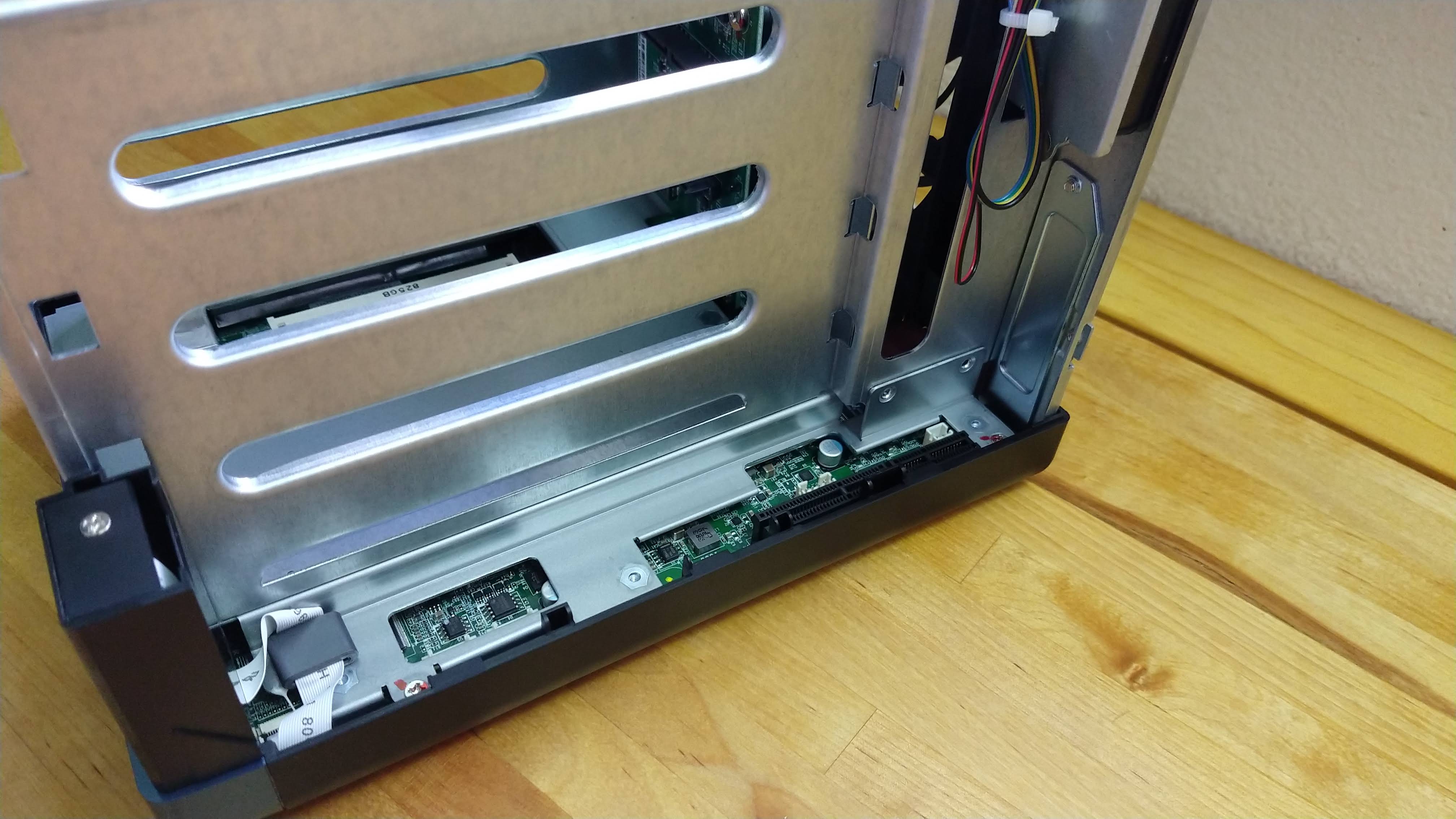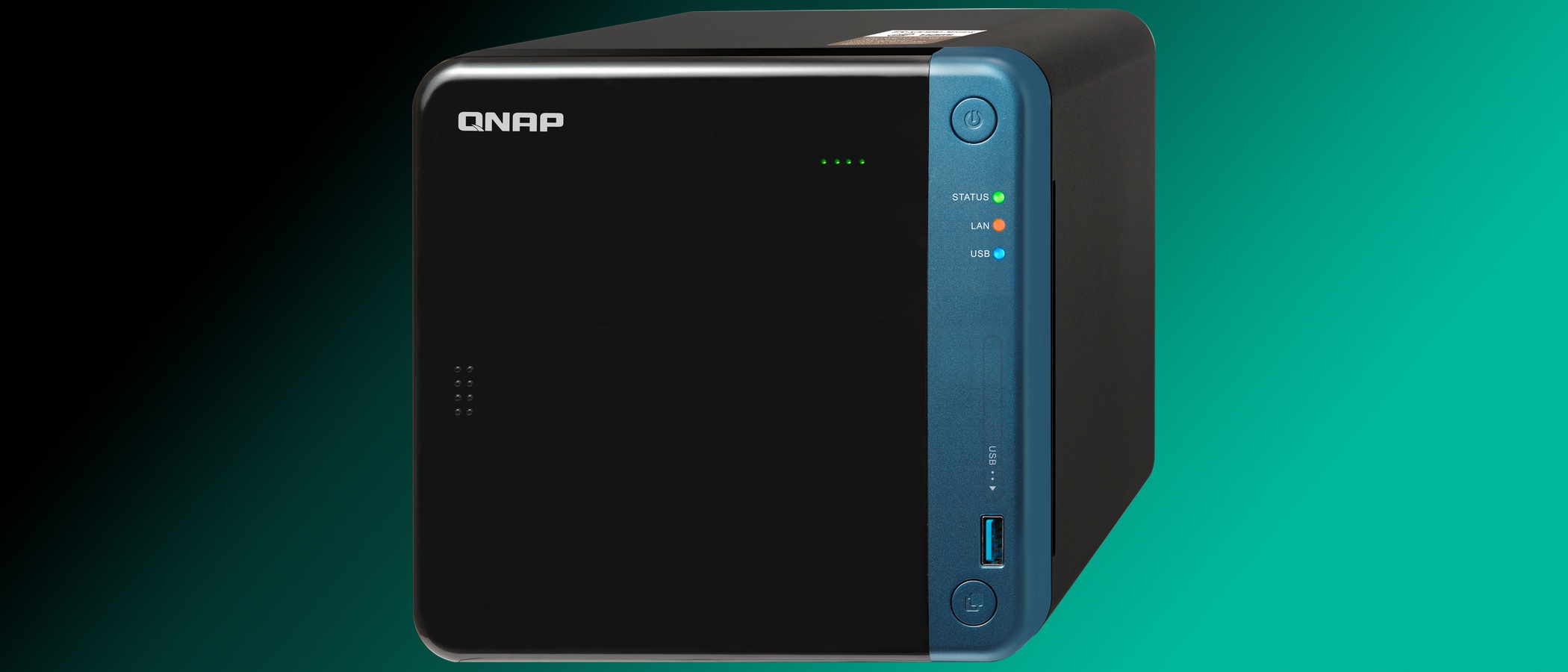Why you can trust TechRadar
Multimedia capabilities
For those who have extensive media collections, a NAS can be a great way to store and stream content. The TS-453Be supports the usual DLNA streaming, and has a free Kodi-based add-on that makes it fairly simple to stream your media library to a dedicated network media player or smart TV.
Thanks to the Intel Celeron CPU, the NAS also supports real time dual-channel transcoding at up to 4K resolutions. The advantage here is that the NAS can handle the video encoding side of things, and just send a stream that is optimised for the specific device and/or network connection being used for playback. Not only does it avoid codec and scaling compatibility issues, but it can also reduce network bandwidth use or even create video streams that can be sent over the web.
The real drawcards for media lovers, however, are the dual HDMI outputs, which allow the NAS to be used directly as a media player. There's also an optional infrared remote (the RM-IR004) that can further enhance its usefulness as a media player, although adding it will set you back around $30/£15/AU$30. We've previously tested the latter remote with another QNAP NAS, and while basic, it's functional enough to cover all the basic media-control needs. It’s also possible to use a USB keyboard and mouse to interact with onscreen elements instead. The NAS also has two microphone inputs, as well as a standard 3.5mm audio output.
While not yet very common, the TS-453Be does support 360-degree videos and photos – another handy feature for the future if these formats become more popular.

PCIe upgrades
While some users may never actually use the PCIe upgrade slot, it’s a great way to save some money now but make sure your NAS can stay relevant for a decent amount of time into the future. The TS-453Be supports some handy add-ins, and the physical install process isn't too complex. It does involve removing a few screws and sliding the cover off, but there's then plenty of room to do the install. While some other QNAP NAS boxes have dual PCIe slots, here you'll have to make do with just a single upgrade.
Those craving ultrafast network speeds can drop in a 10GbE network card, with QNAP offering single- or dual-port options. Using the two built-in 1GbE ports together can provide sequential read and write speeds around 225 MB/s, whereas QNAP rates a dual 10GbE connection setup at around 650 MB/s reading and writing. While not a major factor for most home users, those who need to transfer large files frequently will likely appreciate the difference.
10Gbps USB 3.1 is also supported via a different card, which makes it easy to connect to other storage devices directly. Compared to the onboard USB ports, the 10Gbps USB 3.1 connections are about twice as fast for file transfers. This is handy for users who have portable drives that need to be plugged into the network at full speed, such as for video editing.
To improve random access speeds, a dual port M.2 SSD card can be installed. This is great for those who need access to files where the speed of the hard drives, rather than the network, is the limiting factor.
The TS-453Be can also be upgraded with a compatible PCIe wireless adapter. The benefits are not really aimed at everyday users, but having built in Wi-Fi can give a greater degree of control and flexibility compared to a separate wireless access point. It also means you can link the NAS into your network wirelessly, without needing a separate media bridge.

Performance & testing
We tested the TS-453Be equipped with 4GB of RAM, using four Seagate IronWolf Pro hard drives set up in RAID 1. Our review unit didn't include any expansion cards, so was tested on a regular 1GbE network.
Not surprisingly, the TS-453Be has more than enough processing power and throughput to saturate a one-gigabit network connection. While we have tested NAS boxes that have managed to eke out a tiny bit more performance, the 112.3 MB/s read and 109.2 MB/s write speeds we saw here are both excellent results. It’s also worth noting that, at this level, it’s almost entirely constrained by the network speed, meaning if you do upgrade to 10GbE, those speeds will be higher still.
The NAS also had no issues streaming 4K media, (including using transcoding) to both Android devices and a smart TV.
The NAS does a reasonable job of containing hard drive noise, and the 120mm exhaust fan is unobtrusive when running. The unit does have a fairly large external power brick though, which can be hard to tuck away out of sight.
Final verdict
The TS-453Be gives solid performance and boasts a fairly impressive set of features. It’s great for those who want the capacity to upgrade or expand elements later, without worrying about the expense now. It’s also quite affordable to opt for the base 2GB model and then add more RAM yourself.
The device also has excellent media functionality – so much so that you'll want to really want to make use of it to justify the price. The HDMI video outputs give it the capability to operate as a standalone media player, and like most higher-end NASes its ability to install apps or run virtual machines to expand its software chops make it more like a mini computer than the 'network attached storage' name otherwise implies.

Lindsay is an Australian tech journalist who loves nothing more than rigorous product testing and benchmarking. He is especially passionate about portable computing, doing deep dives into the USB-C specification or getting hands on with energy storage, from power banks to off grid systems. In his spare time Lindsay is usually found tinkering with an endless array of projects or exploring the many waterways around Sydney.
